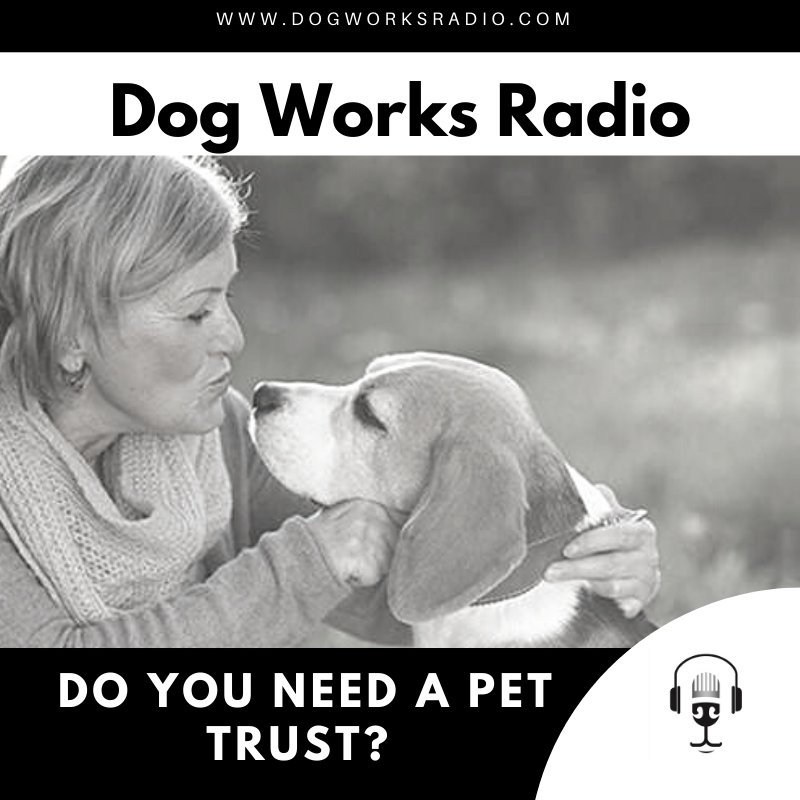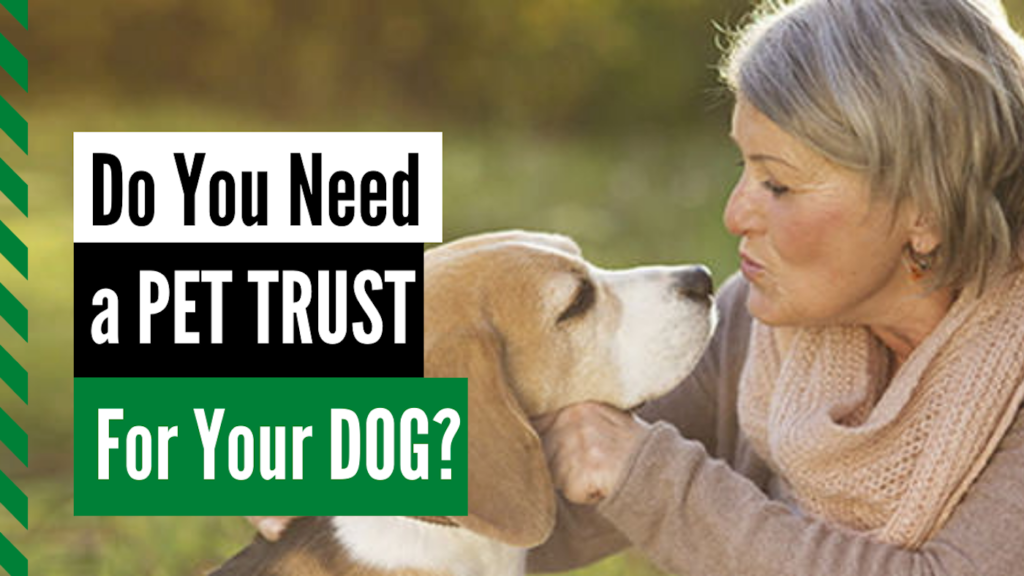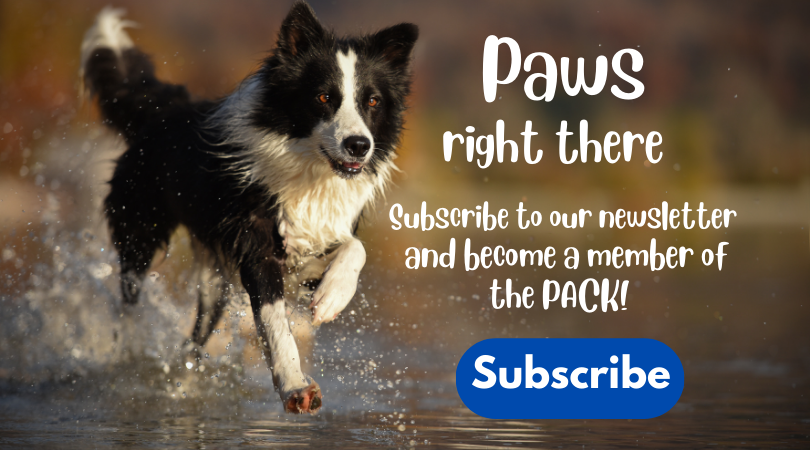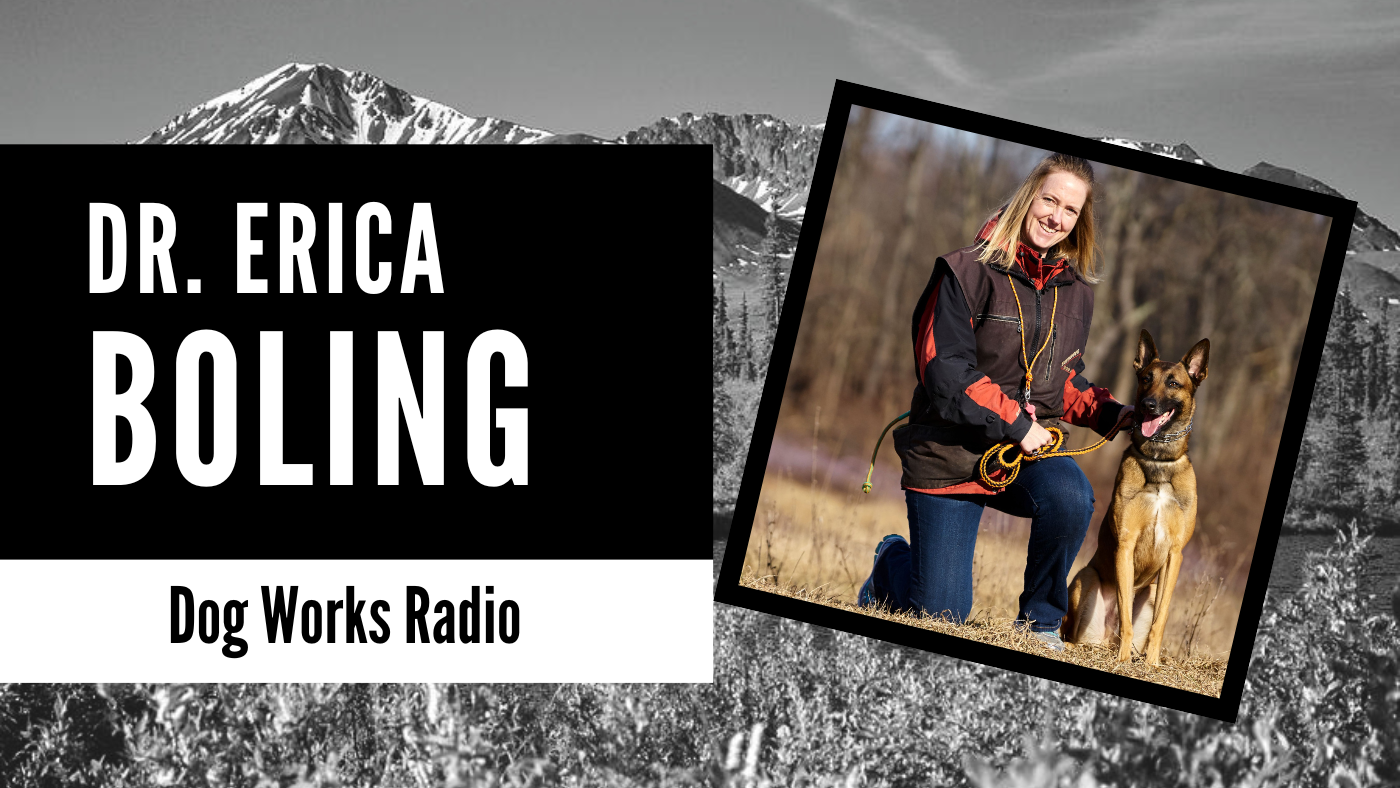Join host Michele Forto as she presents Do You Need a Pet Trust for Your Dog?
Pets are often like members of the family, so you might worry about what will happen if you’re no longer around to take care of them. This is a very important show and kind of an eye opener for me. If you follow us on social media you may have heard that I had a bit of a health scare and ended up in the hospital. While it was nothing major, just a bad kidney stone, I did end up spending the night in the hospital and for the first time in more than 25 years I was not home to take care of my dogs.
Setting up a pet trust to benefit your pet can put your mind at ease, and you don’t have to be a billionaire to do it. If you are in a very unique position like my husband and business partner, Robert and I this is something very important that you will need to listen to. As the owner of not only, Alaska Dog Works, where we also operate a sled dog kennel with 37 dogs. They are expensive and we want to make sure we have done the right thing now so that they will be cared for in the event that something tragic happens to us. If you would like to learn more, please check out the episode, Pet Trusts on Dog Works Radio.com
What we talk about on this episode:
- What is a pet trust and why you should have one
- Can life insurance be used for a pet trust?
- A Mushing Radio update
- Our Calendar of Events
- Behind the Breed: Russell Terrier
Hello and welcome to Dog Works Radio. I am Michele Forto and I am the lead trainer of Alaska Dog Works. Here we help owners, and their dogs have better relationships. On today’s show we are talking about pet trusts and why you might think about setting one up for your pet. Oh, one last thing before we get started, you may notice a little change in format to our show. I hope you like it.
Why a pet trust?
A trust, a legal entity that holds property and money for beneficiaries, is a good option to care for a pet because you can’t leave property, cash or life insurance money directly to an animal.
Pet trusts got a dubious reputation after hotel heiress Leona Helmsley left $12 million in trust for her white Maltese, Trouble, and nothing to two of her four grandchildren. A year after Helmsley died in 2007, a judge reduced the dog’s trust to $2 million. Trouble lived in the lap of luxury until she died at age 12 in 2011.
Trouble’s original trust may have been excessive, but pet trusts make sense in some situations, and life insurance can be a good way to fund them, says Gerry Beyer, co-author with Barry Seltzer of “Fat Cats & Lucky Dogs: How to Leave (Some of) Your Estate to Your Pet.”
“If you care about your pet, you need to make proper arrangements and plan,” says Beyer, a professor at the Texas Tech University School of Law. Too often, he adds, “family members do not want to be bothered, and the animal ends up at the pound.”
Your pet may be part of the family, but the law considers animals property. That’s why you can’t leave money directly to your pet. “You might as well leave money to your desk or your car,” Beyer says.
Three primary options
There are three main ways of planning for pet care after your death:
- Traditional trust: You can set up a traditional trust for a pet. With a traditional trust, you provide instructions for the pet’s care, appoint a caregiver and name a trustee to manage the money. If you fund the trust with life insurance, you name the trustee as the beneficiary and include the name of the trust on the document. Your life insurance company will tell you how to word the designation. You can also designate a portion of a life insurance policy to go to the pet trust and the remainder to go to other beneficiaries, such as your children.
- Statutory pet trusts: With a statutory pet trust, you put a simple direction in your will, such as “I leave $5,000 in trust for the care of Rover,” Beyer says. The probate court will fill in the gaps, appointing people to provide care and oversee the money. Minnesota is the only state that does not recognize statutory pet trusts, but Beyer expects that to change. The downside of a statutory pet trust is it doesn’t let you leave detailed instructions for the pet’s care.
- Pet Protection Agreement: If you don’t need to leave substantial money for the care of a pet, another option is a do-it-yourself Pet Protection Agreement available through LegalZoom. The agreement, created by animal law and estate attorney Rachel Hirschfeld, lets you spell out instructions for care of your pets and is signed by both you and the pet guardian. It is legally binding.
A traditional trust gives you the most latitude in financially planning for the pet’s care, Beyer says. You can spell out all the details — from what your pet should be fed to how often he should see the vet to where he should sleep.
If you’re using life insurance to provide the pet-care money, you’ll need to decide what type of policy makes the most sense considering your age and the pet’s age:
- Term life insurance will cover you for a certain number of years, such as 10, 20 or 30. If you’re likely to outlive your pet and you want coverage in case you die prematurely, term life will work.
- If your pet is likely to outlive you, a permanent life insurance policy, which covers your entire life span, is the best choice. (It is also more expensive than term life insurance.)
When to consider a pet trust
Pet trusts are especially important if you have a pet with a long-life span, says attorney Kim Bressant-Kibwe, the trusts, estates and planned-giving counsel for the American Society for the Prevention of Cruelty to Animals.
African grey parrots, for instance, generally live 50 to 70 years. Horses usually live about 25 years, Bressant-Kibwe says, “but I know of one who lived past 50.” Some tortoises have been known to live more than 150 years.
Pet trusts also are advisable for people with exotic pets, which would be hard to place in new homes, or for people with multiple pets.
Mistakes to avoid
The pet trust that Helmsley set up for little Trouble was problematic from the start. A judge reduced it at the request of the estate’s trustees because it was so obviously excessive. It also ran into problems because the trust document directed Helmsley’s brother or her grandson to care for the dog. But neither wanted to, so the trustees had to find someone else to provide care.
To avoid such problems, follow these tips from Bressant-Kibwe when setting up a pet trust.
- Talk to the people you want to care for your pets to make sure they’re willing to do it.
- Choose a trustee who is different from the pet caregiver. This provides a system of checks and balances.
- Name successors for the trustee and caregiver in case either is unable to perform the role.
- Get referrals for estate attorneys who have handled pet trusts before. Ask your local animal welfare organization for names.
- Be reasonable with the amount you set aside for your pet, so the trust doesn’t become a target for disgruntled relatives.
- Designate where the remainder of the money in the trust will go when the pet dies. An animal welfare organization is a good option. Don’t designate the remaining money for the caregiver, Bressant-Kibwe advises. That would give the caregiver reason to want the animal to die sooner and perhaps skimp on care. You can designate money in the trust to compensate the caregiver while the animal is alive.
- Provide detailed instructions. “Don’t assume your caregiver and trustee will know how your pet should be taken care of.”
Thinking about what would happen to your pets if something happened to you is part of being a responsible pet parent, Bressant-Kibwe says.
“We don’t want pets to end up at the doors of shelters,” she says.
To find the right coverage amount and compare prices, use NerdWallet’s life insurance comparison tool.
What do you think? Is a pet trust something you might need to consider? Let us know in the comment section if you are listening on social media.
Ok guys let’s learn all about the Russell terrier. Did you know that these little guys are one of my favorite breeds to train? Not only are they a real challenge for me but they are so fun. One of my favorite clients had one of these little guys, named Bobby when we lived in Denver. That little dog will always hold a place in my heart.
Upbeat, lively, inquisitive, and friendly, the jaunty Russell Terrier was developed by England’s “Sporting Parson” for use in foxhunts. The adorable Russell Terrier looks like a plush toy come to life but is an eager, tireless working terrier.
About the Russell Terrier
These jaunty little fellows pack lots of personality into a compact, rectangular body standing 10 to 12 inches at the shoulder. Their dark, almond-shaped eyes and mobile V-shaped ears bring out the keenly intelligent expression—an endearing hallmark of the breed. All three coat types are mostly white with markings that are tan or black, or both. Russell’s move with a free, effortless gait that announces the breed’s innate confidence.
Quick Facts
- Temperament: Alert, Inquisitive, Lively
- AKC Breed Popularity:Ranks 82 of 197
- Height:10-12 inches
- Weight:9-15 pounds
- Life Expectancy:12-14 years
- Group:Terrier Group
History
The Russell and Parson Russell terriers share a common heritage as fox-working dogs from the kennels of Rev. John “The Sporting Parson” Russell of the mid-1800s. Since the parson’s day, the lines of the two terriers have diverged and are now recognized as two distinctly separate breeds. Russells were bred to be swift enough to run with the hounds and tough but compact enough to go to ground and bolt prey.
GENERAL APPEARANCE
The Russell Terrier is a strong, active, lithe, predominately white-bodied working Terrier of character with a flexible body of moderate length and rectangular profile. The overall dog must present a balanced image with no one part exaggerated over another. The Russell Terrier is full of life and moves with confidence that matches his keen expression. The coat may be smooth, broken, or rough and may have tan and/or black markings with no preference for coat type or markings. Tail docking is optional.
Care
The Russell Terrier should do well on high-quality dog food, whether commercially manufactured or home-prepared with your veterinarian’s supervision and approval. Any diet should be appropriate to the dog’s age (puppy, adult, or senior). Some dogs are prone to getting overweight, so watch your dog’s calorie consumption and weight level. Treats can be an important aid in training but giving too many can cause obesity. Learn about which human foods are safe for dogs, and which are not. Check with your vet if you have any concerns about your dog’s weight or diet. Clean, fresh water should be available at all times.
Grooming
The Russell Terrier’s rough and ready appearance is easily maintained. Coats come in three types: smooth, broken, and rough. The dense, short, smooth coat can be kept looking great with an all-over rubdown with a soft brush or a hound glove once a week. The rough and broken coats will require going over with a brush or a dog comb weekly but are kept mostly natural, with minimal grooming. Russell’s nails should be trimmed monthly, and his ears checked weekly for debris or excess wax and cleaned as needed.
Exercise
The Russell Terrier is not a breed for a couch-potato family. High energy levels and a robust personality make this an excellent choice of breed for an outdoorsy family who takes lots of hikes, bike rides, and long daily walks. Finding games he loves to play will help keep his brain and his body exercised. A tired Russell Terrier is a good RT. With an almost limitless supply of energy, this makes a great companion dog for children who understand dogs. The breed has retained a strong prey drive so should be very well socialized early on to circumvent any problems that might result from that trait.
Training
The first tool one must-have when training a Russell Terrier is a good sense of humor. They are extremely intelligent and love to work on problems and play games. They bore easily, so training sessions must be kept entertaining if you want them to learn. They master tricks easily and love entertaining people by performing. They throw themselves into any job or activity with the same dedication they were bred to have for hunting purposes. They are great choices for canine sports such as agility, flyball, obedience, rally, and even lure coursing.
Health
The majority of Russell Terriers are happy, healthy little dogs. Responsible breeders screen their stock for health conditions such as patellar luxation (loose kneecaps), deafness, and eye disease, and are dedicated to preserving the genetic health of the breed by doing health testing on all their breeding stock.
Recommended Health Test from the National Breed Club:
- B.A.E.R. Testing
- Ophthalmologist Evaluation
- Patella Evaluation
- PLL DNA Test
Did You Know?
- The ancestry of the breed combines the ultimate size, instinct, and construction for the working earth terrier.
- The Russell Terrier originated in England and was developed in Australia.
- The Russell Terrier is considered the ultimate working earth terrier never bred for the bench.
- The Russell Terrier has been recorded in the Foundation Stock Service since October 2005.
- The Russell Terrier is AKC’s 175th breed.
Want to learn how to train your Russell Terrier to be one of the best-trained dogs? Head over to Alaska dog works.com and click on the Training tab to find out more.
We are introducing a brand new weekly segment on the show, it is a tie-in to our other podcast Mushing Radio. On this podcast, Robert and our friends, Alex Stein and Kourosh Partow talk about sprint mushing, the Iditarod, and interview dog drivers from around the world. You can hear that podcast right here on this feed.
So Robert, what is happening in the world of mushing this week?
Robert: Iditarod update and coverage, Kobuk 440 coming up the first week of April, great spring mushing in Alaska. Off-season training, less 100-day countdown until the official kick-off of the 2022 Iditarod which will be its 50th year. The Iditarod calendar officially kicks off the last Saturday in June with the volunteer picnic and musher sign-up at the headquarters in Wasilla. Let’s hope that it can happen this year with COVID and all.
It is now time our calendar of events. For those that are listening locally on KVRF or our current and past clients stay tuned for important announcements, for our other listeners, stick around and you might learn something cool.
March is Poison Prevention Awareness Month.
March 23: National Puppy Day.
In early April we will be at the Mat Su Outdoorsman show at the Alaska State Fairgrounds in Palmer for this three-day event. Come out and say hello. We like it when you say hi. We will also have all of our coffee blends on sale, a bunch of gear and you can learn all about our adventure dog club just in time for spring. We are excited about this one. It was canceled last year because of COVID but this year is supposed to be bigger than ever. Not only will we be there but there will be food trucks, live events, demonstrations, and much more. This is the premier event for anyone that is interested in getting outdoors in Alaska.
On April 17 we will be starting our group classes in the park. They will be held at Wonderland Park in Wasilla at 11:30 am. These are free for our current and past clients and are part of your training package. If you are not a client or just want to check us out, this is a great way. We do have a nominal drop-in fee.
We are gathering gear for our first ever nose work class and treiball and Robert is going to do pack walks again too. If you want to get an idea of what we will be doing, head on over and watch the Pack on Amazon Prime Video. It is a really cool show!
Did you know that every Wednesday and Sunday night we do a Facebook Live at 7 pm? Be sure to check us out. If you miss the live broadcasts you can always tune in later too.
Also, stay tuned for info about the Summer Festival, how you can train your dog to run in the Alaska Dog Works Dryland Derby this fall, and much more. As always you can keep up to date by following us on our social channels, just search Dog Works Radio and for more training tips and tricks and to learn how to schedule a free discovery call to talk with us about how to make your dog one of the best, visit Alaska dog works.com
Host, Michele Forto’s Bio: Michele Forto is the lead trainer for Alaska Dog Works where they train dogs for service work, obedience, and more. Michele is also the business manager and husky wrangler for Team Ineka. When Michele is not training dogs she loves to travel on their annual Rock n Roller Tours where she and Robert hit up rock concerts and roller coasters around the country.
Host, Robert Forto’s Bio: Robert Forto is the training director for Alaska Dog Works where they train dogs for canine obedience, working dogs, therapy dogs, and service dogs for clients all over North America. He is also a dog musher and he and his wife operate a 36-dog mushing kennel in Willow, Alaska, called Team Ineka. They can often be seen at local races and leading expeditions in the Alaska backcountry with outdoor leadership students at the University of Alaska. Robert is the producer of Dog Works Radio that has been on the air since 2009 and is currently simulcast on a local radio station, KVRF in Palmer, Alaska.
Links and Resources Mentioned:
- RSS feed for our show: https://dogworksradio.libsyn.com/rss
- Alaska Dog Works
- First Paw Coffee
- Robert Forto on Twitter: @robertforto
- Dog Works Radio on Twitter: @dogworksradio
- Michele Forto on Twitter: @micheleforto
- Alex Stein on Twitter: @coldfootfilms
- Dog Works Radio on Facebook
- Dog Works Radio on Instagram
- KVRF in Alaska
Thanks for Listening! We appreciate your visiting our site today and for help in bringing awareness to the Dog Works Radio podcast
Where we are going? (In real life)
- Rock n Roller Coaster Tour 21 #rocknroller21 to live host The Coaster Geeks Podcast
- Podcast Movement 21 in Nashville in August #PM21
Audience feedback drives the show. We would love for you to email us and keep the conversation going! Email live@dogworksradio.com or call us at 907-841-1686
-
- We would love to hear from you!
Help us spread the word! We would love it if you could please share #DogPod with your Twitter followers. Click here to post a tweet If you dig this episode head over to Apple Podcasts and kindly leave us a rating or a review and subscribe!
Ways to subscribe to Dog Works Radio
Feedback and Promotion You can ask your questions, make comments, and request a show topic! Let your voice be heard.
-
- Email live@dogworksradio.com
- Book an interview on the show
- Take the Survey



















